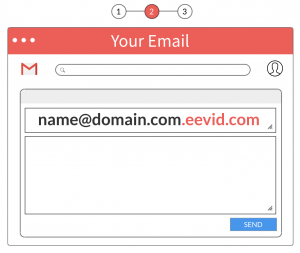Email Tracking: Read Receipts Are Not Reliable Proof To Prove Email Delivery

Relying on read receipts to prove email delivery or that your message has been read isn’t recommended. In fact, Google advises not to rely on read receipts for certifying the delivery of an email. Then, what are you supposed to do?
If we just broke your heart, keep on reading as we got you covered. Lucky for you, there is a way to reliably prove email delivery which doesn’t require the recipient to intervene or manually return any read receipt.
What is an email read receipt
An email read receipt or a return receipt is a notification sent to the sender when an email has been opened by the recipient.
This is how it generally works:
- Sender requests the acknowledgement to the recipient
- Recipient receives and opens an email. A message is displayed asking the recipient to push a button to manually return the read receipt.
This system fully relies on the recipient, as he/she has to manually return the read receipt – which means that you’ll probably get no answer in many of the occasions.
There’s also email tracking systems that install a pixel in your emails to know when they are opened. But the truth is these systems are not reliable either as technology sometimes fails to recognize when an email is opened or not.
In any case, read receipts aren’t a reliable way to prove email delivery and obviously they don’t constitute legal evidence. Keep reading to know why.

Why email read receipts are not reliable
Read receipts are part of the Message Disposition Notifications (MDNs) and exist since the late 1970′. However, they were not intended to prove delivery of an email to a person, but as a way, more or less reliable, of making sure that the few servers that were online at the time were up and running and that emails got to destination.
In fact, the Message Disposition Notification RFC 3798 is quite clear about the legal considerations of MDN messages:
MDNs may be forged as easily as ordinary Internet electronic mail and whilst they can provide valuable information to the mail user, they cannot be relied upon as a guarantee that a message was or was not seen by the recipient. Even if MDNs are not actively forged, they may be lost in transit.
Furthermore, Google warns us about the use of read receipts:
Do not rely on read receipts for certifying mail delivery. Although read receipts generally work across email systems, you may sometimes get a receipt for an unread message or not get a receipt even though the recipient has read the message.
Here’s a practical example of what Google says: Imagine that you send an email that contains a tracking pixel – a very tiny image inserted in the email to track emails. Your experience tells you that when the recipient opens the email, the pixel will get activated and you will be notified. But what you don’t know is that the email server of the recipient has the image preview function disabled, so when the recipient opens the email, the pixel won’t be activated. Ta-da!
So the question here is: if read receipts aren’t reliable, what is the best way to reliably prove email delivery?
What you need is a registered email with legal proof of delivery
Instead of relying in non-reliable read receipts, send a registered email any time you need solid proof of email delivery.
A registered email legally certifies that the message and its contents have been sent and delivered to recipients. Unlike read receipts, eEvidence’s registered email technology doesn’t require the recipient’s intervention which means that the delivery receipt is automatically issued, even if the recipient doesn’t open the email or deliberately deletes it.
As a sender, all you need to do is sign up for eEvidence, access your regular email account, compose the email as usual and make sure to add “.eevid.com” extension at the end of each recipient’s email address. In a few seconds, we’ll email you the evidence you are looking for. As easy as it sounds.

Is this evidence legal and court-admissible? Yes it is. If somehow in the future you are required by the law to provide evidence of your email communications, our evidence receipt is all you need to prove that you sent an email and that it was delivered.
Want to give it a try? Go to our sign up page, choose the plan that fits best your needs and start sending registered emails today!
If you are interested in starting to to communicate with greater guarantees and you are a professional, particular and/or small company, do not hesitate to consult the different rates available and register. If on the other hand, you are a company with high volumes of shipments and needs tailored to your project, please contact us.



